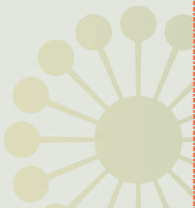THINGS THAT GO BUMP IN
THE NIGHT An old Scottish prayer petitions the deity: "From ghoulies and ghosties and long leggety beasties, and things that go bump in the night, Good Lord, deliver us!" Throughout the literature of human civilization there have been references to ghosts and spirits and beliefs about their appearances. From the ancient pyramid texts comes a prayer to Hathor, said while drinking beer, to keep away male and female ghosts. Ebenezer Scrooge thinks that Marley’s ghost is the result of a “bit of undigested beef” triggering a phantasm of the mind. The question, however, is more than whether ghosts are the result of biochemical malfunction or aberrant neuro-electric stimulation of the brain. What are they and why do humans encounter them in this seemingly trans-cultural phenomena? Do we believe in ghosts, spirits of the dead, because we cannot believe in our own nonexistence, which is part of the evolutionary self-preservation and ego-defense mechanism? Or is there something in every culture down through recorded time that presents sufficient reason to accept the validity of apparitions and other paranormal activity? In attempting to define what a “ghost” is, we can look at it etymologically. “Ghost” is derived from the Old English word gast, meaning “breath” or “spirit.” It is akin to the German geist which has a multiplicity of meanings. The Bible refers to ruah which is the “breath”of God, breathed into Adam at the Creation, so that humans possess an element of the Divine. The Biblical expression for dying in the King James Version is “to give up the ghost.” Jesus’ final act on the cross was to “release his pneuma”or spirit. At the time of physical death, this “ruah-geist-spirit-ghost” returns to its Source. But sometimes it doesn’t, and occasionally makes its presence felt among those who are in physical existence, and for some reason desire to communicate with us. Hans Holzer distinguished between ghosts and spirits, saying that ghosts are related to a particular place associated with the person’s death or a place with which they had close association in this life. Ghosts are usually the spirits of persons who have suffered a traumatic death and are confused as to where they are, often not realizing that they have passed through the veil of death. Generally ghosts do not travel but haunt a particular location. Spirits have purpose and may appear to comfort, to reassure, to convey information, to seek fulfillment or resolution of an issue. Recently I was called into a case involving
a girl whose death occurred under mysterious circumstances. Although
the authorities classified her death as natural, all other evidence,
including postmortem forensic analysis, indicated a homicide.
The parents of the girl reported that shortly after her death
they began experiencing signs of her presence in their home (although
she hadn’t
lived there for several years)—the smell of her perfume,
movement of objects, non-aural communication, feeling of other
entities in the house. I also felt the girl’s presence on
the stairs. On a subsequent visit, a well-known psychic corroborated
as much. The parents said that they had had the same experience
and that their dog would also respond to something on the steps.
There were additional signs that there was something unconventional
about the situation. Ghosts, of course, have a mind of their own, as do we all, and we need to at least entertain the possibility of their existence and desire to communicate with us. After all, as Hamlet said to his friend: "There are more things in heaven and earth, Horatio, Than are dreamt of in your philosophy." Dr. Harry L. Serio |
|
